
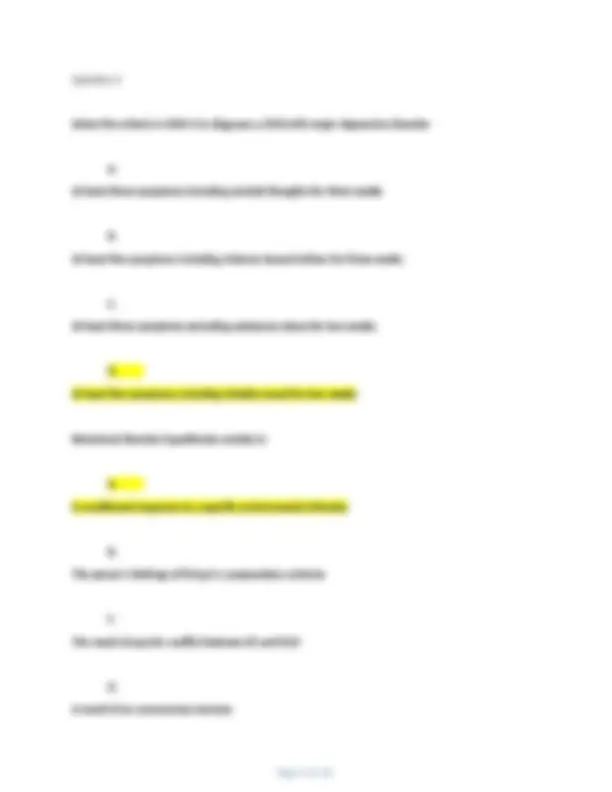
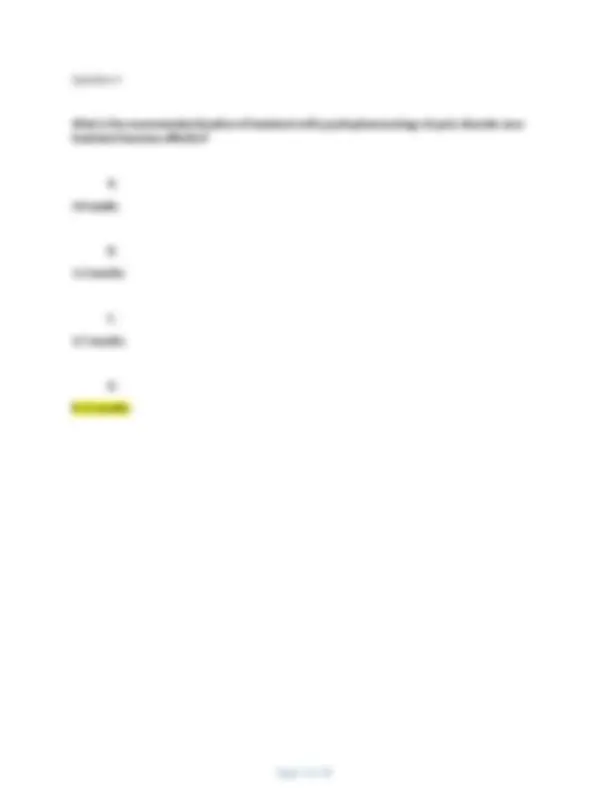
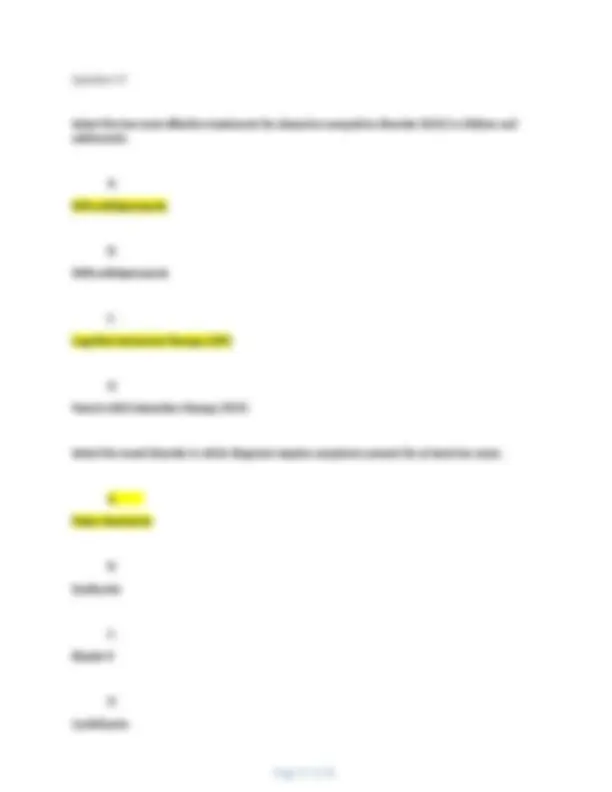
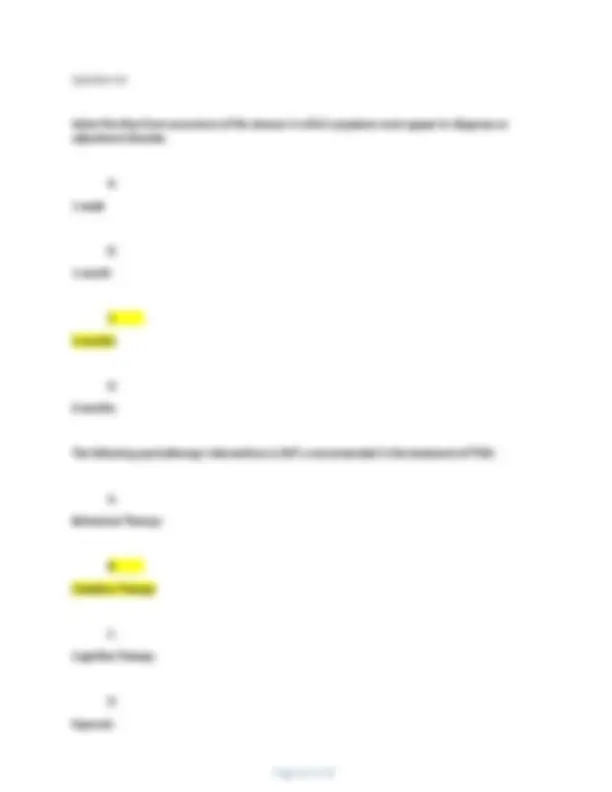
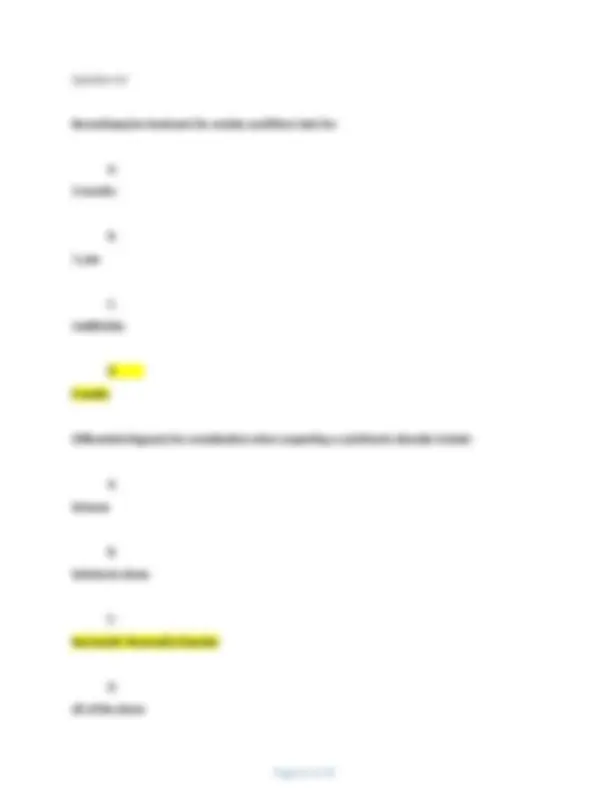
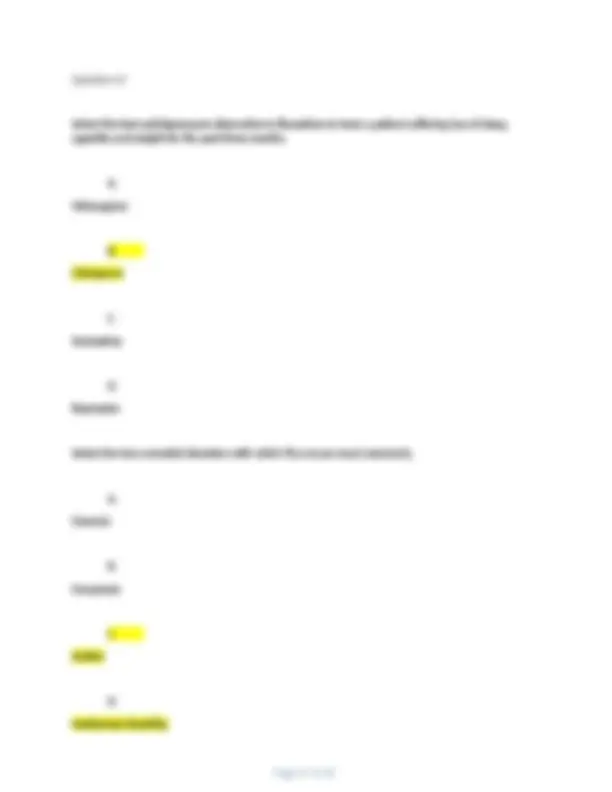
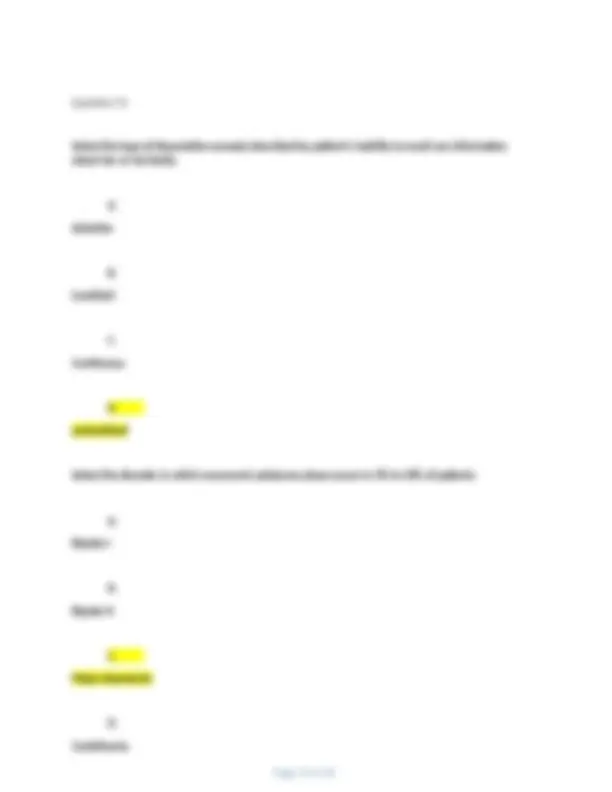
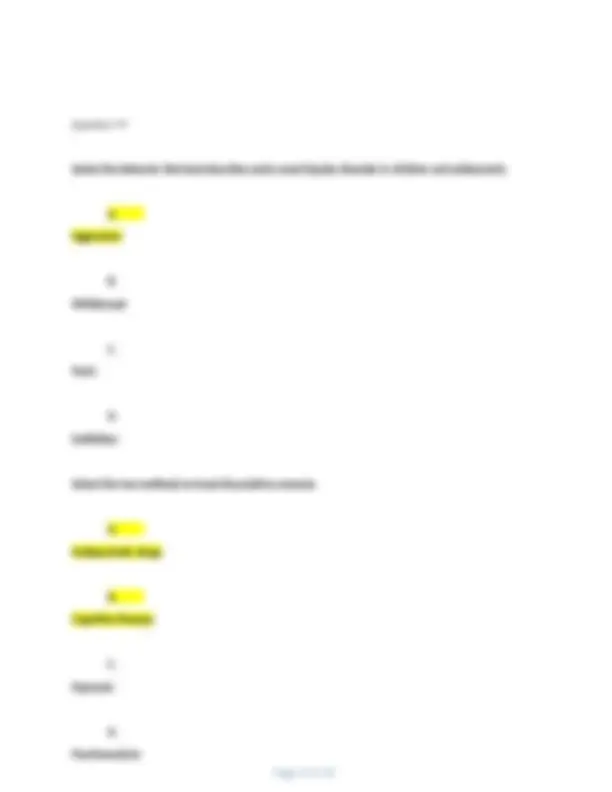
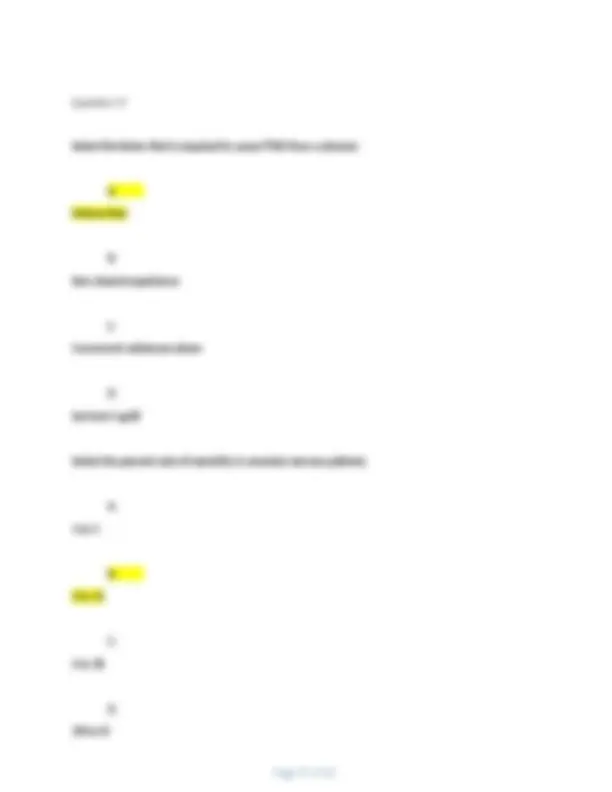
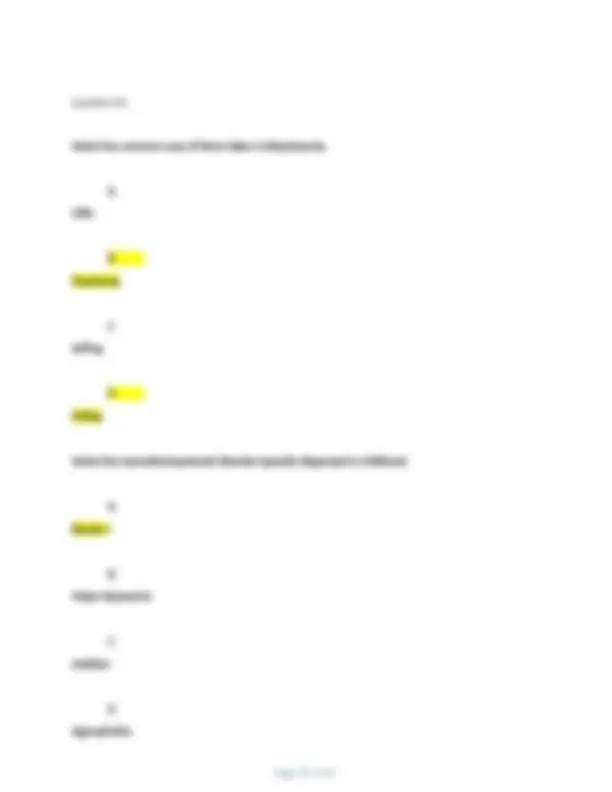
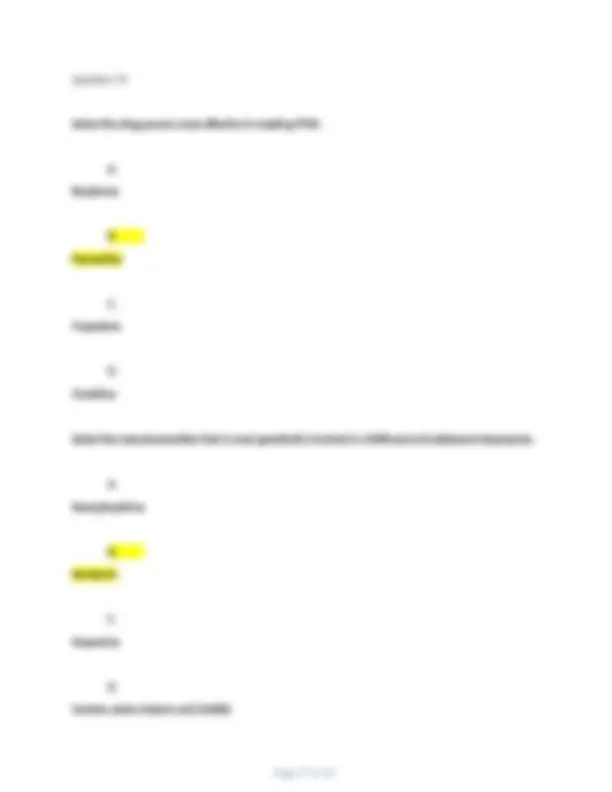
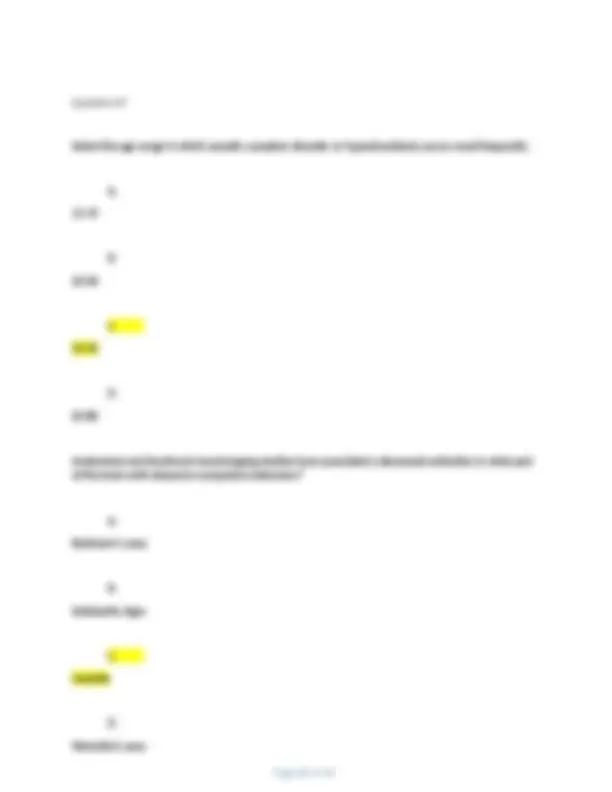

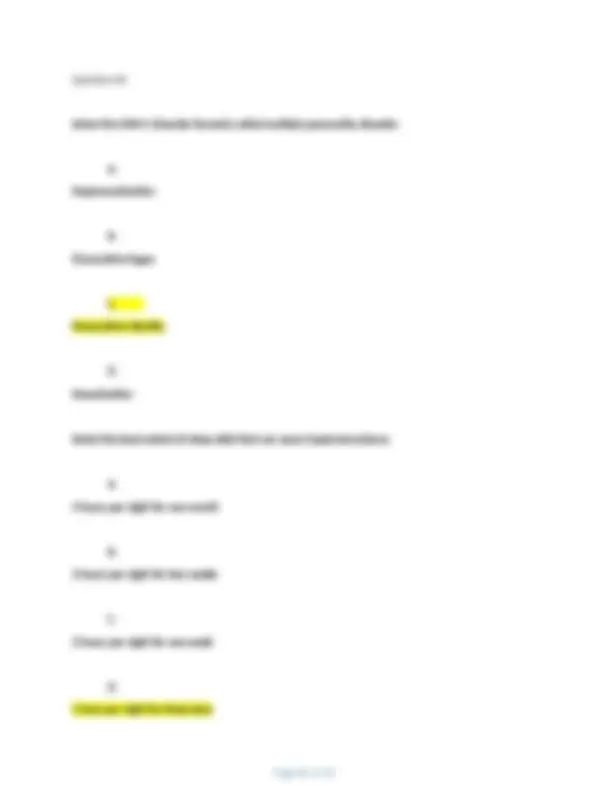
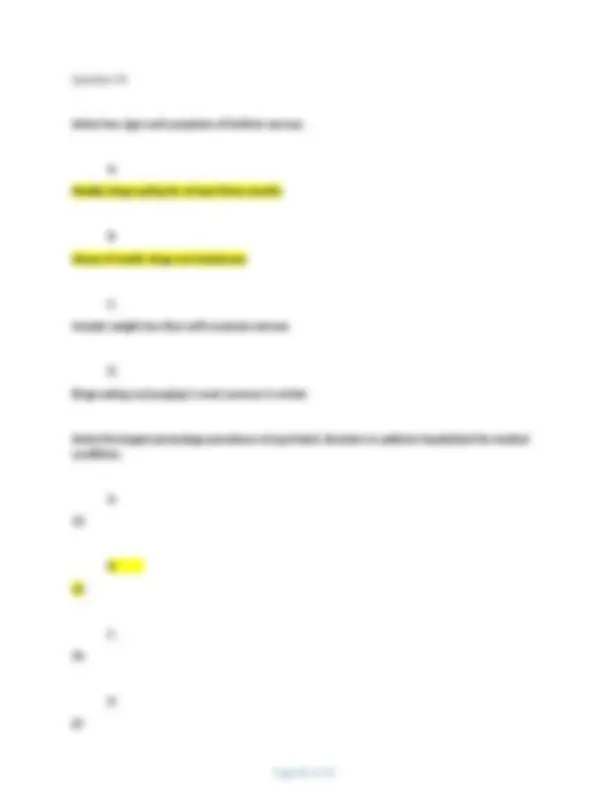
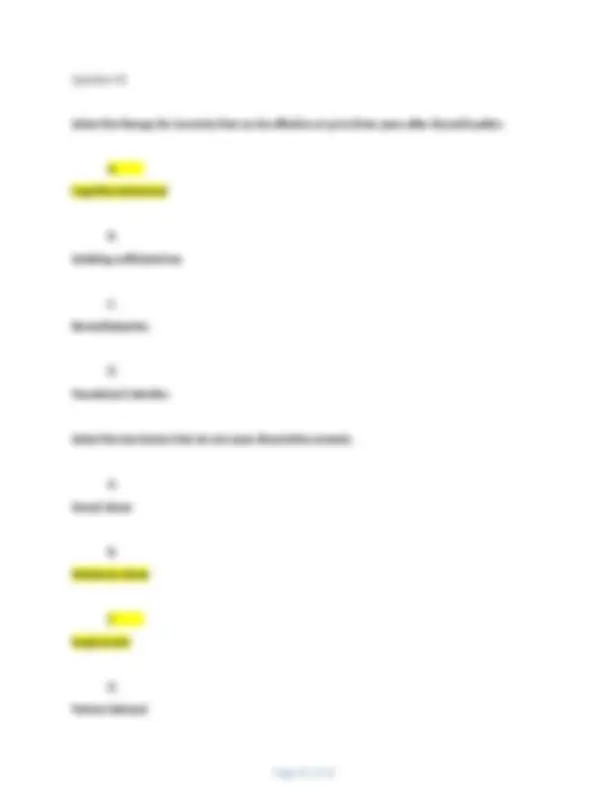
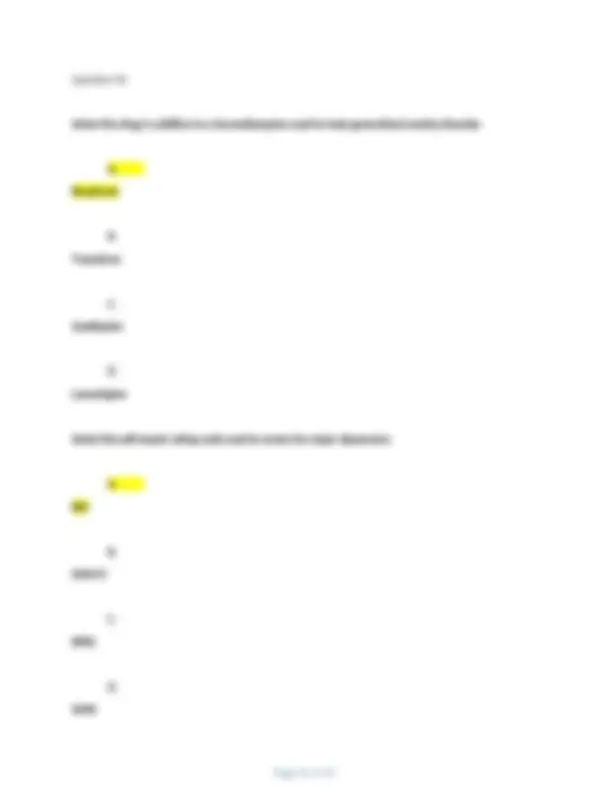
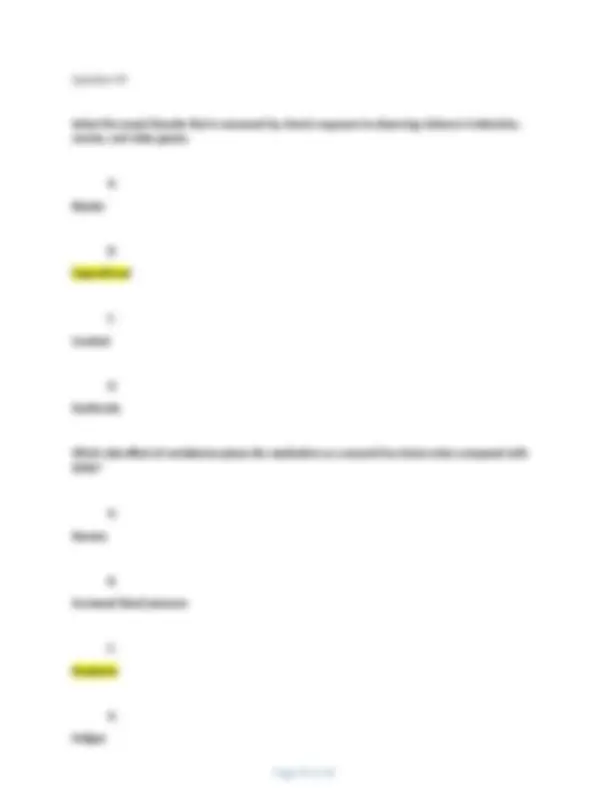
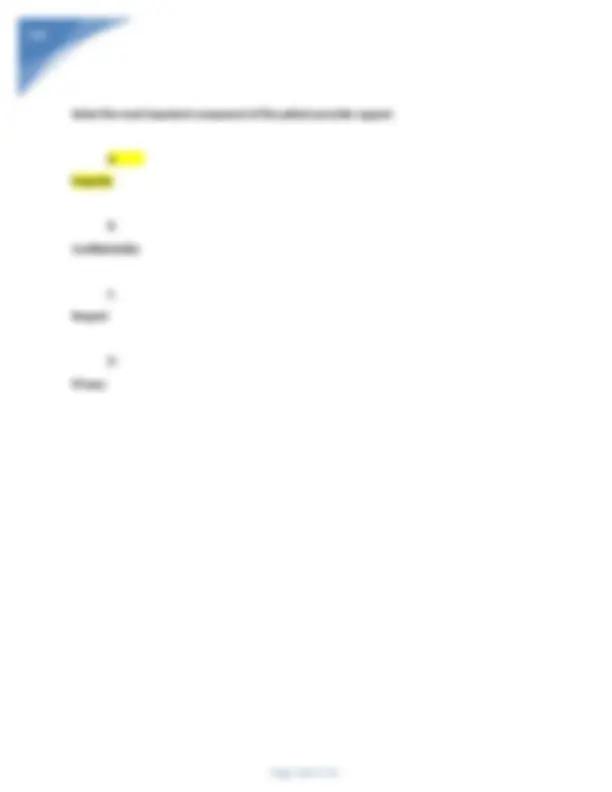


Study with the several resources on Docsity

Earn points by helping other students or get them with a premium plan


Prepare for your exams
Study with the several resources on Docsity

Earn points to download
Earn points by helping other students or get them with a premium plan
Community
Ask the community for help and clear up your study doubts
Discover the best universities in your country according to Docsity users
Free resources
Download our free guides on studying techniques, anxiety management strategies, and thesis advice from Docsity tutors
A series of multiple-choice questions and answers related to psychiatric disorders and treatments. The questions cover topics such as data collection during psychiatric interviews, treatments for obsessive-compulsive disorder, mood disorders, and comorbid disorders. The document also includes questions on rating scales used to assess response to treatment and health and disability. The questions are designed to test knowledge of psychiatric disorders and treatments and are useful for students studying psychiatry or related fields.
Typology: Exams
1 / 27

This page cannot be seen from the preview
Don't miss anything!




















Select the psychiatric disorder that occurs most commonly in patients hospitalized for medical problems and surgery. A. Depression B. Adjustment C. Bipolar D. Anxiety What is the primary goal of data collection during the psychiatric interview? A. To obtain the family’s perception of the patient’s health and illness B. To explain the provider’s perception of the patient’s health and illness C. To obtain the patient’s perception of their health and illness D.
To obtain statistics regarding the patient’s health and illness
What is the recommended duration of treatment with psychopharmacology of panic disorder once treatment becomes effective? A. 4-6 weeks B. 1-2 months C. 3-7 months D. 8-12 months
Select the two most effective treatments for obsessive-compulsive disorder (OCD) in children and adolescents. A. SSRI antidepressants B. SNRI antidepressants C. Cognitive behavioral therapy (CBT) D. Parent-child interaction therapy (PCIT) Select the mood disorder in which diagnosis requires symptoms present for at least two years. A. Major depression B. Dysthymia C. Bipolar II D. Cyclothymia
Select the preferred treatment for bulimia nervosa. A. Cognitive-behavior therapy (CBT) B. SNRI antidepressants C. Monoamine oxidase inhibitors (MAOIs) D. Dynamic psychotherapy Select the serious risk of treating cyclothymic patients with antidepressant drugs. A. Acute depression B. Manic episode C. Uncontrolled impulses D. Suicidal ideation
Select the time from occurrence of the stressor in which symptoms must appear to diagnose an adjustment disorder. A. 1 week B. 1 month C. 3 months D. 6 months The following psychotherapy interventions is NOT a recommended in the treatment of PTSD: A. Behavioral Therapy B. Chelation Therapy C. Cognitive Therapy D. Hypnosis
Select the best antidepressant alternative to fluoxetine to treat a patient suffering loss of sleep, appetite and weight for the past three months. A. Mirtazapine B. Citalopram C. Duloxetine D. Bupropion Select the two comorbid disorders with which Pica occurs most commonly. A. Enuresis B. Encopresis C. Autism D. Intellectual disability
Select the neurotransmitter dysregulation that is most directly involved with OCD. A. Dopamine B. Norepinephrine C. Serotonin D. GABA Select the rating scale used to assess response to antidepressant drug therapy. A. BDI B. MMSE C. BPRS D. HAM-D
Select the type of dissociative amnesia described by patient’s inability to recall any information about her or his family. A. Selective B. Localized C. Continuous D. ystematized Select the disorder in which concurrent substance abuse occurs in 5% to 10% of patients. A. Bipolar I B. Bipolar II C. Major depression D. Cyclothymia
Select the behavior that best describes early onset bipolar disorder in children and adolescents. A. Aggression B. Withdrawal C. Panic D. Exhibition Select the two methods to treat dissociative amnesia. A. Antipsychotic drugs B. Cognitive therapy C. Hypnosis D. Psychoanalysis
Select the most common stressor of PTSD in women. A. Home accident B. Partner or spousal abuse C. Sexual assault D. Natural disaster Select the psychiatric disorder for which drug and nondrug treatments are least effective. A. Dissociative amnesia B. Major depression C. Depersonalization D. Dissociative identity
Select the third most commonly reported psychiatric symptom. A. Depression B. Anxiety C. Psychosis D. Depersonalization Which rating scale is recommended for measuring health and disability? A. WHODAS 2. B. BDI C. CAPS D. Conners Rating Scale
Select the drug proven most effective in treating PTSD. A. Buspirone B. Paroxetine C. Trazodone D. Clonidine Select the neurotransmitter that is most genetically involved in childhood and adolescent depression. A. Norepinephrine B. Serotonin C. Dopamine D. Gamma amino butyric acid (GABA)
Select the age range in which somatic symptom disorder or hypochondriasis occurs most frequently. A. 15- B. 20- C. 35- D. 65- Anatomical and functional neuroimaging studies have associated a decreased activation in what part of the brain with obsessive-compulsive behaviors? A. Bodmann’s area B. Substantia nigra C. Caudate D. Wernicke’s area